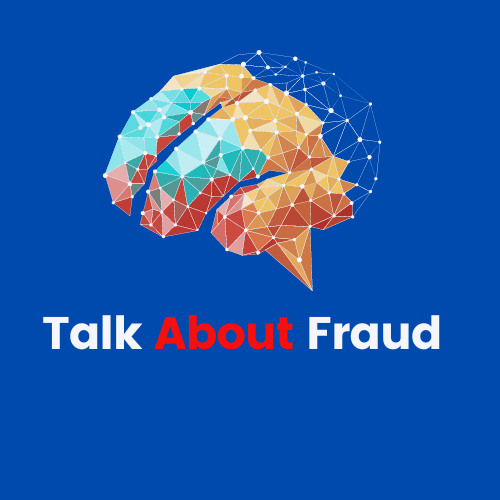Insurance fraud is a pervasive issue affecting individuals, businesses, and the global economy. It’s an illegal act where dishonest claims are made to secure unwarranted payouts from insurance companies. Despite being illegal, insurance fraud has become a widespread crime, costing insurers billions annually and driving up premiums for honest consumers.

This blog will explore what constitutes insurance fraud, the different types of fraud, the motivations behind it, the impact it has on society, and what measures can be taken to prevent it. By understanding the scope and scale of this problem, we can begin to address and mitigate the damage it causes.
What is Insurance Fraud?
Insurance fraud occurs when someone deliberately deceives an insurance company to gain a financial advantage. This can involve falsifying claims, inflating the value of damages, staging incidents, or submitting claims for injuries or losses that never happened. Insurance fraud is not limited to individuals; businesses, professionals, and even criminal organizations are involved in this illegal activity.
Insurance fraud can be categorized into two main types:
- Hard Fraud: This is premeditated, where the fraudster deliberately stages an incident or falsifies information to make a claim. Examples include staging car accidents, burning down property, or faking an injury.
- Soft Fraud: Also known as opportunistic fraud, soft fraud occurs when a legitimate claim is exaggerated. For instance, someone may suffer a genuine injury but claim a longer recovery period to collect more in compensation.
While the legal ramifications for committing insurance fraud can be severe, including heavy fines and prison sentences, the allure of financial gain continues to attract fraudsters.
Types of Insurance Fraud
Insurance fraud takes many forms, with fraudsters exploiting various types of policies. Understanding the different forms can help individuals and companies recognize warning signs and prevent becoming victims of fraud. Some common types of insurance fraud include:
1. Health Insurance Fraud
Health insurance fraud occurs when individuals or providers attempt to scam the healthcare system. This type of fraud is particularly concerning because it not only affects the financial health of insurers but can also put people’s lives at risk. Common schemes include:
- Phantom billing: Billing for services not provided or inflating the cost of services.
- Upcoding: Charging for more expensive services than what was performed.
- False claims: Submitting claims for treatments or medications that were never given.
- Shared cards: Shared cards are when an uninsured person files a claim using the identity of someone who is insured.
Health insurance fraud can lead to higher premiums for consumers, reduced coverage, and strain on healthcare systems.
2. Auto Insurance Fraud
Auto insurance fraud is one of the most common types and can take several forms. Fraudsters may stage accidents or exaggerate damages to collect more money than the actual repair costs. Common schemes include:
- Staged collisions: Drivers intentionally cause accidents, often targeting unsuspecting victims, to claim damages.
- Exaggerated damages: A person may inflate the cost of vehicle repairs or claim additional injuries that didn’t occur.
- False vehicle theft: A car owner may claim their vehicle was stolen when they either sold it or disposed of it illegally.
Auto insurance fraud drives up premiums for everyone and clogs the legal system with fraudulent claims.
3. Property Insurance Fraud
Property insurance fraud occurs when property owners inflate the value of damages or intentionally cause destruction to collect on an insurance policy. Examples include:
- Arson: A property owner intentionally sets fire to their property to collect insurance money.
- Inflating claims: After a legitimate disaster (e.g., a flood or fire), individuals may overstate the extent of the damage to receive a larger payout.
- False theft claims: Claiming that valuable items were stolen when, in reality, they were never owned or lost.
4. Life Insurance Fraud
In life insurance fraud, fraudsters try to exploit the death benefits that these policies provide. Common tactics include:
- Faked death: The policyholder fakes their death or disappearance, often in remote locations, so that their beneficiaries can collect life insurance payouts.
- Murder for profit: In more extreme cases, someone may take out life insurance on another person and then kill them to collect the payout.
- False beneficiary claims: A fraudster may forge documents to claim life insurance benefits for themselves, posing as a beneficiary.
5. Workers’ Compensation Fraud
Workers’ compensation fraud happens when employees or employers falsify claims to receive or avoid payouts. Examples include:
- Faking an injury: Workers may claim to be injured on the job when they weren’t, or they may exaggerate a minor injury to take time off and receive compensation.
- False claims by employers: Employers might underreport the number of employees or misclassify workers as independent contractors to avoid paying higher premiums.
Why People Commit Insurance Fraud
The motivations behind insurance fraud are as varied as the schemes themselves. While some people commit fraud out of financial desperation, others are motivated by greed or a sense of entitlement. Some key reasons include:
- Financial Gain: For many, the promise of quick, easy money outweighs the perceived risk of getting caught. They see insurance payouts as a way to solve immediate financial problems, like debt or medical bills.
- Low Risk Perception: Some fraudsters believe that insurance companies have so many claims to process that their fraudulent activities will go unnoticed. This belief is particularly strong when the fraud involves small amounts (soft fraud).
- Greed: For some individuals, fraud is not a response to financial hardship but a means of acquiring more wealth. They may already have the resources they need but view fraud as a way to increase their financial standing.
- Opportunity: People often commit soft fraud because they see it as “taking advantage” of a situation. For example, if their house is legitimately damaged in a storm, they might see no harm in inflating the cost of repairs.
In some cases, organized criminal groups exploit the insurance system for major financial gains, coordinating scams on a larger scale, making the crime not just individual but systemic.
The Impact of Insurance Fraud on Society
Insurance fraud is far from a victimless crime. While it may seem as though the only loser is the insurance company, in reality, everyone pays for fraud. Here’s how:
1. Increased Premiums
When insurance companies pay out fraudulent claims, they pass those costs on to consumers in the form of higher premiums. Every year, honest policyholders pay more to cover the costs associated with fraud. According to estimates from the FBI, insurance fraud costs the average U.S. family between $400 and $700 per year in higher premiums.
2. Strain on the Legal System
Fraudulent claims often lead to legal battles between insurers, fraudsters, and legitimate claimants. This puts a strain on court systems, clogging them with cases that could have been avoided.
3. Impact on Legitimate Claims
Insurance companies may become more stringent in their claim reviews due to the high frequency of fraud. This can result in delays for legitimate claims, where people who genuinely need financial help must wait longer for their payouts.
4. Increased Business Costs
Businesses, too, suffer from higher premiums when they’re required to carry insurance. Companies that fall victim to fraudulent workers’ compensation claims, for example, may see their premiums spike, increasing their operating costs and potentially leading to job cuts or higher prices for consumers.
How to Prevent Insurance Fraud
Preventing insurance fraud requires the cooperation of insurers, policyholders, and legal authorities. Some strategies include:
1. Fraud Detection Technology
Insurance companies increasingly rely on technology to detect fraud. Algorithms can identify patterns in claims that suggest fraud, such as repeat claims from the same individual or irregularities in documentation. AI and machine learning systems are also helping insurers flag suspicious activity more quickly and efficiently.
2. Public Awareness Campaigns
Raising awareness about the consequences of insurance fraud can deter individuals from committing fraud. Public campaigns can educate people on the legal ramifications, such as fines and prison sentences, as well as the broader societal impact of fraud.
3. Stricter Regulations
Governments can implement and enforce stricter regulations to monitor and reduce fraud. Agencies like the National Insurance Crime Bureau (NICB) in the United States work alongside law enforcement to investigate and prosecute insurance fraud cases.
4. Encouraging Whistleblowers
Companies can create a culture where employees and customers are encouraged to report suspicious activities. Many insurance companies offer financial incentives for whistleblowers, providing a crucial line of defense against fraudulent activity.
5. Fraud Awareness Training
Insurance companies should provide training for their employees to recognize the signs of fraud. Training can help claim handlers spot inconsistencies or red flags, ensuring that fraudulent claims are caught early in the process.
6. Think before you act
If you hear of someone committing insurance fraud or are considering it yourself, don’t. Realize that the cost of punishment can be extreme and even if you do not get caught, you will be paying for it elsewhere. If you do not have a tip line, you can always call a tip into the FBI.
Conclusion
Insurance fraud is a serious issue with widespread consequences. While some may view it as a victimless crime, the reality is that fraud raises premiums for honest consumers, strains legal systems, and places businesses in financial jeopardy. By understanding the various types of fraud, the motivations behind it, and the steps we can take to prevent it, individuals and companies can play a role in curbing this costly crime.
Preventing insurance fraud requires collective effort—public awareness, regulatory action, and technological innovation are all key. As technology continues to evolve, we may see more sophisticated tools and techniques to fight fraud, protecting both consumers and insurers from the financial burden it causes.


You are a very clever person!
I have recently started a website, the information you provide on this web site has helped me tremendously. Thanks for all of your time & work.
Well I truly liked reading it. This information provided by you is very helpful for correct planning.
I like what you guys are up also. Such intelligent work and reporting! Carry on the excellent works guys I¦ve incorporated you guys to my blogroll. I think it’ll improve the value of my website 🙂
I think you have observed some very interesting points, thanks for the post.
Im not sure where you are getting your information, but good topic. I must spend some time learning much more or understanding more. Thanks for wonderful information I used to be looking for this info for my mission.
I am often to blogging and i really appreciate your content. The article has really peaks my interest. I am going to bookmark your site and keep checking for new information.
Este site é realmente demais. Sempre que consigo acessar eu encontro coisas incríveis Você também vai querer acessar o nosso site e saber mais detalhes! informaçõesexclusivas. Venha saber mais agora! 🙂
Some truly wonderful info , Gladiolus I discovered this. “We protest against unjust criticism, but we accept unearned applause.” by Jose Narosky.
Thanks for the good writeup. It in reality was a enjoyment account it. Glance complicated to far introduced agreeable from you! However, how could we keep up a correspondence?